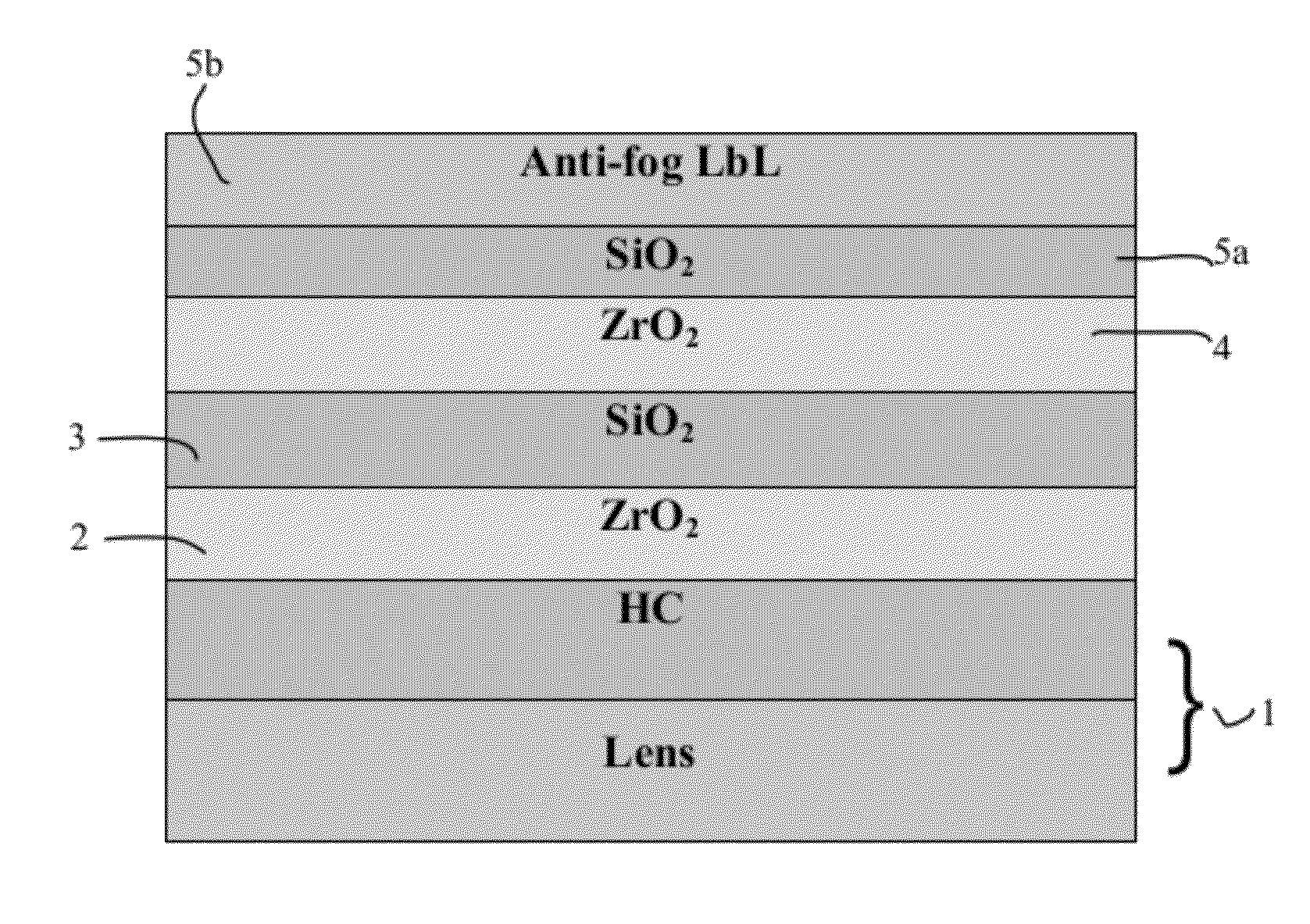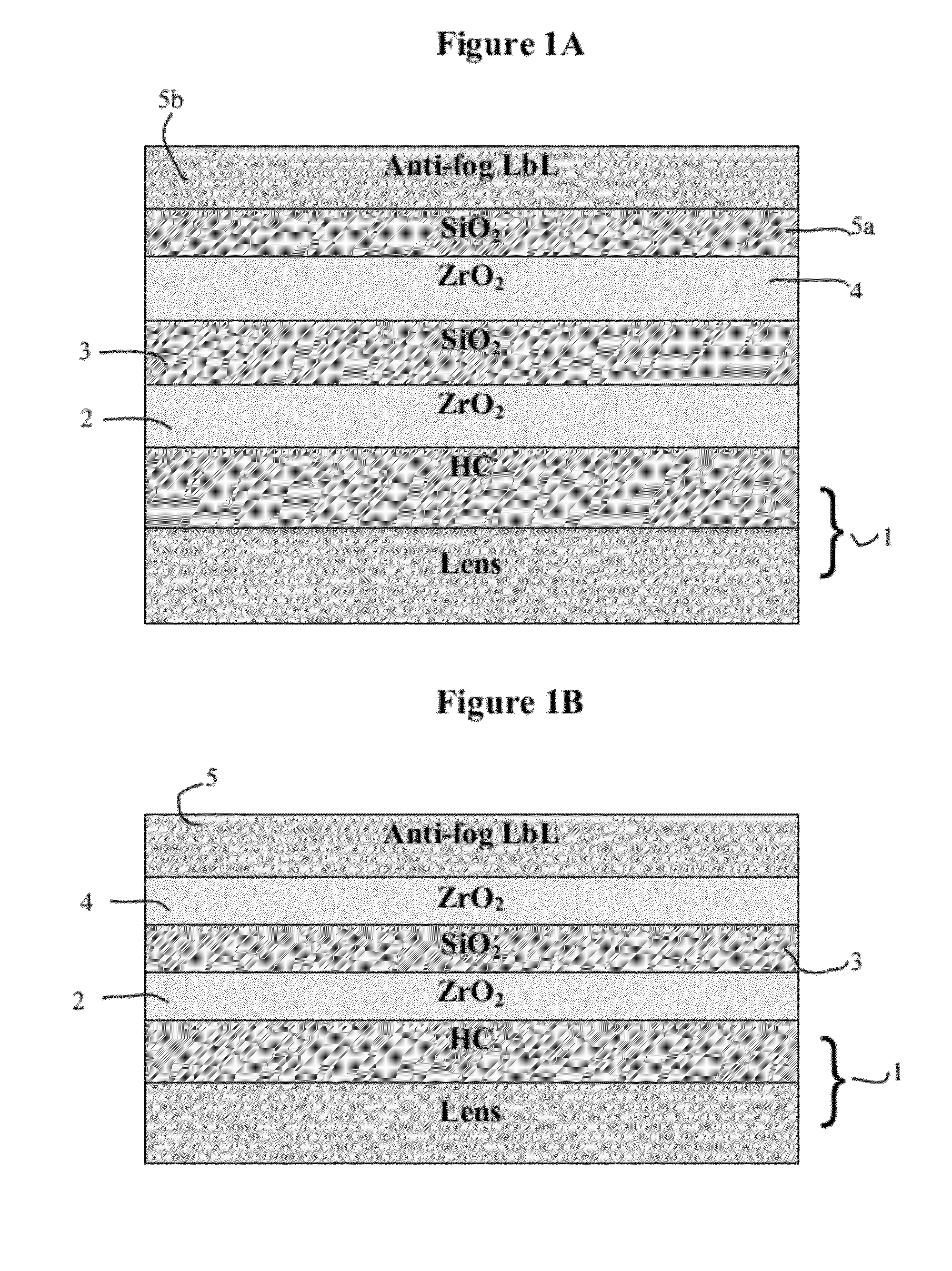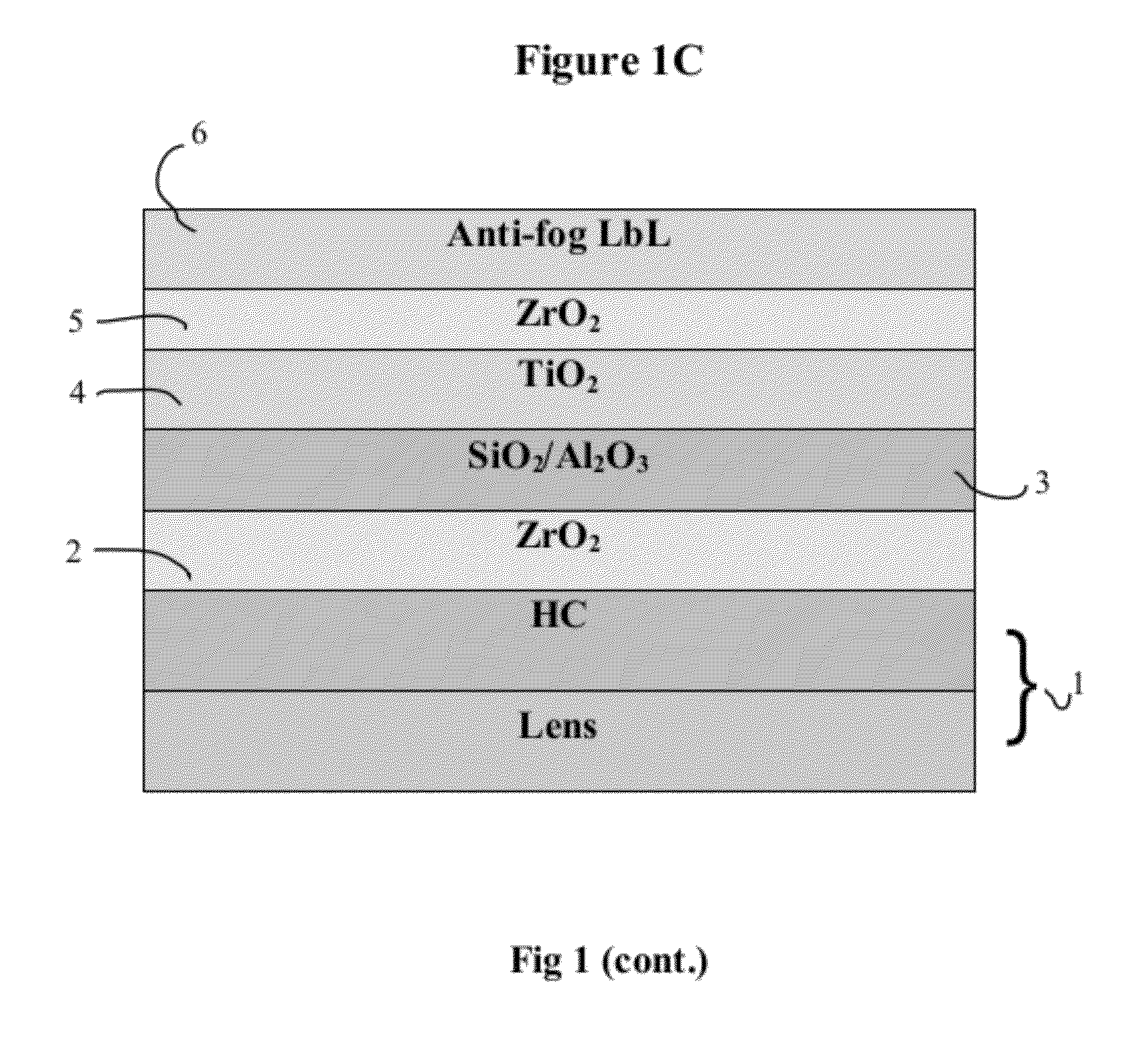Optical Article Including an Antireflecting Coating Having Antifog Properties and Process for Making Same
a technology of antifog properties and optical articles, applied in the field of optical articles, can solve the problems of low control of residual color, relatively high reflection level, and coating, and achieve good mechanical properties
- Summary
- Abstract
- Description
- Claims
- Application Information
AI Technical Summary
Benefits of technology
Problems solved by technology
Method used
Image
Examples
example 1
CTS / CMC Coating on Design I Stack
[0176]0.1 wt % of CTS (added with 0.2 wt % of acetic acid) and 0.1% of CMC solutions were prepared with deionized (DI) water, respectively. All solutions including the DI water rinsing baths were titrated down to pH 4.0 using 0.1N HCl. The dipping time in material solutions was 5 min. The rinsing time in both of agitated DI water was 2 min (agitation speed is about 100 rpm).
[0177]A LbL coating (CTS / CMC)10 or (CTS / CMC)11 was assembled on both sides of the Design I lens, dried and then dipped in a 0.05M MES buffer solution containing EDC (0.2 M) and NHS (0.05 M) for 1 h, and finally rinsed by a PBS solution (0.5×) and air dried. The refractive index of the coatings was characterized as 1.51 and 1.45 at 634 nm, respectively, before and after the crosslinking step, measured by ellipsometer. The thickness of the two LbL coatings was about 60 nm, and increased to 85-100 nm after the crosslinking step. The AR parameters of a concave side of crosslinked samp...
example 2
CTS / CMC Coating on Design II Stack
[0178]The procedure was same as Example 1. A LbL coating (CTS / CMC)125 was assembled on both sides of the Design II lens, dried and then dipped in a 0.05M MES buffer solution (pH=5.0), containing EDC (0.2 M) and NHS (0.05 M) for 1 h, and finally rinsed by a PBS solution (0.5×, pH=7.0) and air dried. The thickness of the crosslinked LbL coating was about 105 nm and its refractive index was 1.46 in average.
RmRvTr % (EN168)SampleCoating(%)(%)60 s120 sC2-1Crosslinked1.370.949291(CTS / CMC)12.5
example 3
ApSiO2 / PAA Coating on Design I Stacks
[0179]0.05 wt % of ApSiO2 and 0.01M of PAA solutions were prepared with DI water, respectively. All solutions including the DI water rinsing baths were titrated down to the same pH 3.5 using 0.1N HCl. The dipping time in material solutions was 2 min. The rinsing time in both of agitated DI water was 1 min (agitation speed is about 100 rpm).
[0180]The (ApSiO2 / PAA)8 or (ApSiO2 / PAA)8.5 coating was assembled on both sides of the Design I lens, dried and then dipped in a 0.05M MES buffer solution containing EDC (0.2 M) and NHS (0.05 M) for 1 h, and finally rinsed by a PBS solution (0.5×) and air dried. The thickness of two crosslinked coatings was 70-80 nm and their refractive index was 1.48 in average at 634 nm.
TrRmRv% (EN168)SampleCoating(%)(%)60 s120 sC3-1Crosslinked0.930.817068(ApSiO2 / PAA)8C3-2Crosslinked0.760.567677(ApSiO2 / PAA)8.5
PUM
| Property | Measurement | Unit |
|---|---|---|
| thickness | aaaaa | aaaaa |
| thickness | aaaaa | aaaaa |
| refractive index | aaaaa | aaaaa |
Abstract
Description
Claims
Application Information
 Login to View More
Login to View More - R&D
- Intellectual Property
- Life Sciences
- Materials
- Tech Scout
- Unparalleled Data Quality
- Higher Quality Content
- 60% Fewer Hallucinations
Browse by: Latest US Patents, China's latest patents, Technical Efficacy Thesaurus, Application Domain, Technology Topic, Popular Technical Reports.
© 2025 PatSnap. All rights reserved.Legal|Privacy policy|Modern Slavery Act Transparency Statement|Sitemap|About US| Contact US: help@patsnap.com



